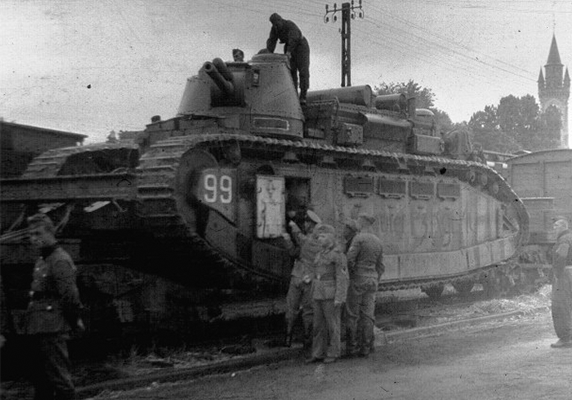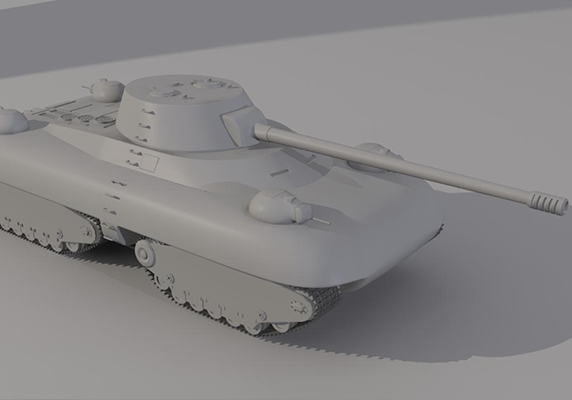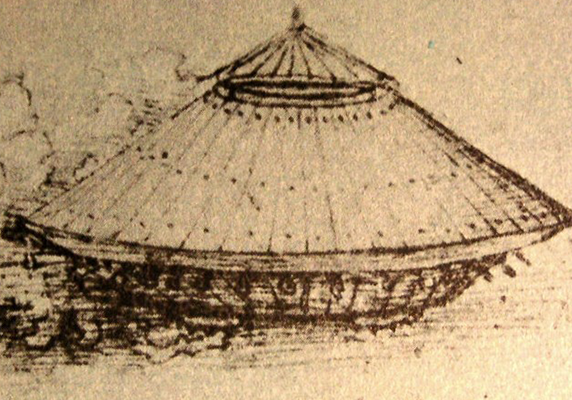Throughout the years, World of Tanks has featured some vehicles that in real life never made it past the drawing stage, surviving only as dusty blueprints until Wargaming came along and resurrected them. However, reality is always a little stranger than fiction, and there were some tanks that would never be able to make it in World of Tanks. Some vehicles are just too big, overpowered, or a few decades shy of the early 20th century.
But that doesn’t stop us from listing some of the most peculiar. We thought we’d unveil some of the tanks that were too weird to live, and too rare to make it into World of Tanks.
The Drill Tank
The screw-propelled/corkscrew vehicle was a land or amphibious contraption designed to make traversing over snow and ice or mud and swamp a breeze. Based on the Armstead snow motor, two large flanged cylinders strapped where a normal tank’s tracks would be fitted would rotate and propel the vehicle.
Recent developments from the Ice Challenger have said that the screw drive in their Snowbird 6 vehicle (used to traverse ice floes) was inspired by the Soviet ZIL-2906 used for collecting cosmonauts who landed in Siberia.
Fans of gravel-toned protagonists in tight armor may recognize that the Soviet Drill Tank’s design bears more than a striking similarity to Metal Gear Solid: Snake Eater’s Shagahod, driven by the game’s antagonist, Volgin.
Credit to YouTuber tadupatokolos
The French Char 2C
Also known as the FCM 2C, the Char 2C is a super-heavy tank from France that, while developed, never trundled over the battlefield during World War I. Taking into account its massive dimensions, it was one of the largest tanks of its time, though never saw active combat. The Char 2C weighed in at 69 tons and was a little over 10 meters long. You could shove up to the crew of 12 people into the tank and reach a top speed of 9 mph. However, the Panzerjäger Tiger Ausf. B, at around 71.7 tons, soon outweighed it.
Image provide thanks to Wikipedia user Phrontis as part of cc-by-sa-3.0

Though the Char 2C was technically featured in the World of Tanks’ supertest, it’s not included in the game. To this day, the origins of the tank still retain an air of mystery. During 1916, French industry actively lobbied for defense orders, making contract offers very lucrative. General Léon Augustin Jean Marie Mourret, the Subsecretary of Artillery, verbally granted Forges et Chantiers de la Méditerranée (FCM) to a shipyard in Toulon for the development of a heavy tank: a char d'assaut de grand modèle. Due to the fact that there was never any official policy on the tank’s design, it is believed the tank was developed on his authority alone.
A year later, in mid-December 1917, a prototype was unveiled, its futuristic appearance swaying those present in its favor. However, due to a series of setbacks, it took until 1923 before the vehicle finally rolled off the production line.
Czolg P (Pancernik) or the Stanislaw Lem tank
Stanisław Lem was a famed Polish writer of science fiction, philosophy and satire; you may know him from his most famous work, Solaris. What some of you may be unaware of was that when Lem was not writing, he tried his hand at tank design.
Lem submitted his proposal to the USSR, which used current and future (1944–1947) heavy tank technology. In the letter, Projects of technical innovations in defense, Lem included illustrations of the proposed tank, and the letter also featured other, smaller tanks.
The vehicle, called Czolg P (Pancernik)/tank-battleship, would have weighed 220 tons, have been 10 meters long and 4 meters wide. It would have been armed with a supposed 152–155 mm. gun for its main turret, 2 AA machine guns in the rear, and 4 machine guns in the smaller copulas along the perimeter. Including its 4 tracks propelled by a single diesel engine, it would be quite a formidable super-heavy tank. Unfortunately, due to an abundance of ground cruiser projects, the USSR ultimately passed on the project.
Model created by GrumpyStranger

The Churchill Crocodile
The Churchill Crocodile was a flame-throwing tank of the late Second World War. Hailing from Britain, (the clue is in the name), it was a variant of the Churchill Mark VII. The Churchill was a specialized armored vehicle developed under Major-General Percy Hobart. Like a number of strangely modified vehicles operated by the United Kingdom’s 79th Armored Division, they were informally known as “Hobart's Funnies”. The Churchill Crocodile, produced from October 1943, was ready in time for the Normandy invasion.
Credit to YouTuber User
Though a flamethrower may not quite work in World of Tanks, there had been a number of tests for British vehicles; the Cockatrice, Basilisk and the Wasp, also spewed fiery liquid punishment. The Churchill could hold 400 imperial gallons (1800 L) of fuel, and paired with the compressed nitrogen propellant, meant there was enough for 80, one-second bursts. The flamethrower itself had a range of up to 120 yards.
The da Vinci Tank
Perhaps a little more renowned for painting women and suppers, Leonardo da Vinci sketched the prototype “tank” while he was under the patronage of Ludovico Sforza in 1487. The tank was designed to intimidate the enemy, and its size meant that it would have been almost impossible to cross rugged terrain.
Inspired by a turtle shell, the tank’s design may appear slightly more conical than most modern interpretations of armored vehicles. Wooden on the outside and reinforced with metal on the inside, the machine was powered by two large cranks that needed a crew of four to operate. Thanks to its steep slope, it would have been great for bouncing shots.

Leonardo and his tank also appear in Assassin’s Creed, so if you take a moment from jumping around Venice, you have the opportunity to check it out.
Landkreuzer P. 1000 Ratte
The Landkreuzer P. 1000 Ratte was, for a lack of a better word, a mobile fortress that was to be a German super-heavy tank for use during World War II. With the approval of Adolph Hitler, it was designed in 1942 by Krupp (a German industrial conglomerate), but was later cancelled by Albert Speer in early 1943. At 1000 metric tons, the P.1000 would have been five times as heavy as the Panzer VIII Maus, the heaviest tank ever built.
The Ratte was to be armed with naval artillery and armored with 10 inches of hardened steel, meaning that you would have had to have brought something of similar force to the party to even think about penetrating it. To compensate for the tank’s weight, and improve stability, there would have been three 1.2 meters wide treads on each side. However, the sheer size of the tank meant that crossing roads would have destroyed them and rolling across a bridge would have turned the vehicle into a submersible.
The closest tank, at least in probable hit points, would be the White Tiger (used for special events in World of Tanks) that has 14,960 hit points.
So there you have it, a list of some truly strange vehicles that hit or very nearly hit the battlefield. Know an interesting tank that wasn’t on the list, why not tell us?
And don’t forget to check out more great content on the rest of the blog.